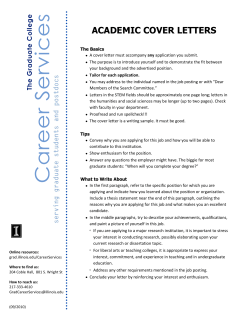
Our sample consisted of 112 native English speakers (mean age =... native Spanish speakers (mean age = 29.8(9.7), 45 female) were... Method Details
Method Details Participants Our sample consisted of 112 native English speakers (mean age = 31.4(12.3), 51 female) and 90 native Spanish speakers (mean age = 29.8(9.7), 45 female) were recruited via Amazon Mturk and were paid $.30 to complete the experiment online. All English speaking participants reported English as their primary language used in everyday life and reported little exposure to Spanish. All Spanish speaking participants reported Spanish as their primary language used in everyday life and reported limited exposure to English. English speaking participants received instructions, change deafness questions, and demographic questions in English. Spanish speaking participants received experiment instructions, change deafness questions, and demographic questions in Spanish. Stimuli, apparatus, and procedure We used a Zoom Q2HD video recorder to record two English/Spanish bilingual women reading the same passage from “Aura” by Carlos Fuentes in both English and Spanish (see appendix). Each of the four video recordings was then digitally split into two parts and converted to an MP3 audio file using Videopad Editor (NCH Software). The recordings were then matched for overall RMS power and submitted to Praat (Boersma &Weenink, 1992) for analysis of mean fundamental frequency (f0) of each voice (speaker A, (f0) = 157.7 Hz; speaker B, (f0) = 175.3 Hz). This yielded one English and one Spanish version of “part 1” and “part 2” of the story from each of the two speakers for a total of eight audio files. The mean duration of the audio clips was 80.8 s. Listeners were instructed to adjust their listening volume to a comfortable level while listening to an instruction audio file recorded in a male voice. As a check that participants could actually hear the audio, they were also instructed to enter a code word that appeared at the end of the audio clip. The male voice said: “Please take a moment to adjust your listening volume to a comfortable level. The word that you should type onto the space below is „apple‟.” Listeners were instructed to count the number of breaths taken by the talker while listening to “part 1” in either English or Spanish. After the first clip listeners reported the number of breaths counted. The story then resumed in the same language, and listeners continued counting breaths. However, “part 2” of the story was completed by a different talker. The order of talkers was counterbalanced across participants. When the second clip finished, listeners reported the number of breaths in “part 2” (see Figure 1A) and were asked the three standard change deafness questions previously used by Vitevitch (2003): (1) Did you notice anything unusual about the experiment? (2) Was the first half of the experiment the same as the second half of the experiment? (3) Was the voice in the first half of the experiment the same voice in the second half of the experiment? Question “(3)” responses were used as the unit of analysis. Preliminary discrimination testing Prior to the experiment we ran an AX discrimination study with 80 native English and 80 native Spanish listeners (none from the current study). Listeners made same/different judgments about four pairs of single sentences from the narratives in English or Spanish from the two bilingual women. The four trials were comprised of sentences from speaker AA-“same” speaker BB-“same” speaker AB-“different”, and speaker BA-“different. There was a 1500 ms inter-stimulus interval between each sentence in a pair. All stimulus pairs were presented in random order. The voices were highly discriminable with d’ = 2.5. Hit rates were subjected to a 2x2 between subjects ANOVA. No main effects were significant. However, the significant interaction between speech language and participant language confirmed the languagefamiliarity effect, F (1,156) = 9.19, p = .003, p2 = .19. Native Spanish listeners showed significantly better discrimination in Spanish, and native English listeners showed significantly better discrimination in English (see Table 1). Appendix Text read in each audio clip from “Aura” by Carlos Fuentes English Part 1 “You put the manuscript aside and go downstairs, suspecting there's only one place Aura could be in the morning—the place that greedy old woman has assigned to her. Yes, you find her in the kitchen, at the moment she's beheading a kid: the vapor that rises from the open throat, the smell of spilt blood, the animal's glazed eyes, all give you nausea. Aura is wearing a ragged, blood-stained dress and her hair is disheveled; she looks at you without recognition and goes on with her butchering. You leave the kitchen: this time you'll really speak to the old lady, really throw her greed and tyranny in her face. When you push open the door she's standing behind the veil of lights, performing a ritual with the empty air, one hand stretched out and clenched, as if holding something up, and the other clasped around an in visible object, striking again and again at the same place.” English Part 2 “Then she wipes her hands against her breast, sighs, and starts cutting the air again, as if—yes, you can see it clearly—as if she were skinning an animal . . . You run through the hallway, the parlor, the dining room, to where Aura is slowly skinning the kid, absorbed in her work, heedless of your entrance or your words, looking at you as if you were made of air. You climb up to your room, go in, and brace yourself against the door as if you were afraid someone would follow you: panting, sweating, victim of your horror, of your certainty. If something or someone should try to enter, you wouldn't be able to resist, you'd move away from the door, you'd let it happen. Frantically you drag the armchair over to that latchless door, push the bed up against it, then fall onto the bed, exhausted, drained of your willpower, with your eyes closed and your arms wrapped around your pillow—the pillow that isn't yours. Nothing is yours. You fall into a stupor, into the depths of a dream that's your only escape, your only means of saying No to insanity. "She's crazy, she's crazy," you repeat again and again to make yourself sleepy, and you can see her again as she skins the imaginary kid with an imaginary knife. "She's crazy, she's crazy…" Spanish Part 1 “Arrojas los papeles a un lado y desciendes, sospechando el único lugar donde Aura podrá estar en las mañanas: el lugar que le habrá asignado esta vieja avara. La encuentras en la cocina, si, en el momento en que degüella un macho cabrio: el vapor que surge del cuello abierto, el olor de sangre derramada, los ojos duros y abiertos del animal te dan nauseas: detras de esa imagen, se pierde la de una Aura mal vestida, con el pelo revuelto, manchada de sangre, que te mira sin reconocerte, que continúa su labor de carnicero. Le das la espalda: esta vez, hablaras con la anciana, le echaras en cara su codicia, su tiranía abominable. Abres de un empujón la puerta y la ves, detrás del velo de luces, de pie, cumpliendo su oficio de aire: la ves con las manos en movimiento, extendidas en el aire: una mano extendida y apretada, como si realizara un esfuerzo para detener algo, la otra apretada en torno a un objeto de aire, clavada una y otra vez en el mismo lugar.” Spanish Part 2 “En seguida, la vieja se restregara las manos contra el pecho, suspirara, volverá a cortar en el aire, como si —si, lo veras claramente: como si despellejara una bestia. . .—Corres al vestíbulo, la sala, el comedor, la cocina donde Aura despelleja al chivo lentamente, absorta en su trabajo, sin escuchar tu entrada ni tus palabras, mirándote como si fueras de aire. Subes lentamente a tu recamara, entras, te arrojas contra la puerta como si temieras que alguien te siguiera: jadeante, sudoroso, presa de la impotencia de tu espina helada, de tu certeza: si algo o alguien entrara, no podrías resistir, te alejarías de la puerta, lo dejarías hacer. Tomas febrilmente la butaca, la colocas contra esa puerta sin cerradura, empujas la cama hacia la puerta, hasta atrancarla, y te arrojas exhausto sobre ella, exhausto y abiilico, con los ojos cerrados y los brazos apretados alrededor de tu almohada: tu almohada que no es tuya; nada es tuyo. .. Caes en ese sopor, caes hasta el fondo de ese sueño que es tu única salida, tu única negativa a la locura. "Esta loca, esta loca", te repites para adormecerte, repitiendo con las palabras la imagen de la anciana que en el aire despellejaba al cabrio de aire con su cuchillo de aire: ". . .esta loca..."
© Copyright 2025












